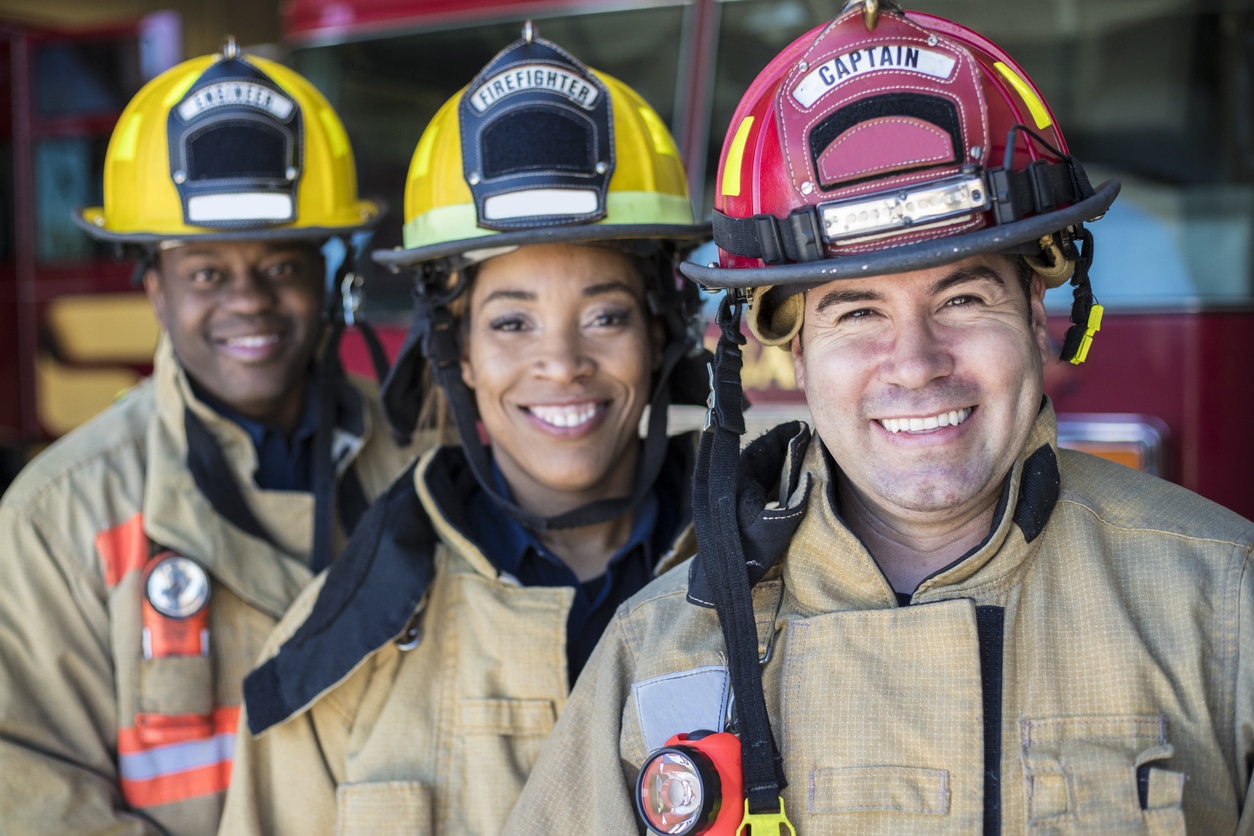
Navigating firefighter life insurance can be challenging due to the intricate terminology involved. Terms such as “premiums,” “coverage limits,” and “beneficiaries” may seem straightforward. But even these often entail nuanced meanings and implications.
Understanding these complexities is crucial for firefighters to make well-informed decisions about their insurance needs. This article aims to decode key terms in firefighter insurance, providing clarity and empowering firefighters to navigate their insurance options confidently.
Basic Insurance Terminology
Grasping firefighter life insurance concepts requires understanding fundamental terms that underpin coverage decisions and policy details. Here are some basic insurance terms you should be familiar with:
- Premiums: Regular payments made to the insurance company to maintain coverage, typically paid monthly, quarterly, or annually
- Coverage: The range of protection the insurance policy provides, outlining what risks or events are included in the policy and how much they are covered
- Beneficiary: The individual or entity chosen by the policyholder to receive the insurance benefits in case of a claim, such as a family member, a trust, or a designated party
Specific Firefighter Life Insurance Terms
Let’s delve into specific terms relevant to firefighter life insurance to better understand the nuances of coverage options and policy details.
1. Hazardous Occupation Classification
Hazardous occupation classification defines the risk level associated with firefighting duties. It plays a crucial role in determining insurance rates for firefighters and directly influences premiums by assessing the occupational risks firefighters face.
Risks associated with firefighting duties directly influence firefighter life insurance premiums. Higher-risk activities, such as exposure to smoke and hazardous materials, typically result in higher premiums to account for the increased likelihood of claims.
2. Critical Illness Coverage
Critical illness coverage provides financial protection for specific illnesses prevalent in their profession. It ensures firefighters receive financial support for medical treatment and other expenses during challenging times.
Critical Illnesses Covered by Firefighter Policies
- Cancer: Firefighters are at increased risk of developing various cancers due to exposure to carcinogens and toxins while battling fires. Critical illness coverage typically provides financial support for cancer treatment and related expenses.
- Heart disease: Firefighting is physically demanding and can lead to cardiovascular issues over time. Coverage often includes heart disease to help firefighters manage medical costs associated with heart conditions.
- Respiratory diseases: Exposure to smoke and harmful chemicals can result in respiratory illnesses such as chronic obstructive pulmonary disease (COPD) or asthma. Critical illness policies may cover these conditions to assist firefighters with medical expenses and ongoing care.
- Stroke: Firefighters may face an increased risk of stroke due to the strenuous nature of their work and exposure to stressful situations. Critical illness coverage can help alleviate the financial burden of stroke treatment and rehabilitation.
- Traumatic injuries: Firefighters are susceptible to traumatic injuries such as burns, fractures, and head injuries while performing their duties. Critical illness policies may offer coverage for these injuries to support firefighters during recovery and rehabilitation.
3. Disability Insurance
Disability coverage for firefighters provides financial support if a firefighter cannot work due to an injury or illness related to their profession. It offers compensation to help offset lost income and cover medical expenses during the period of disability.
Difference Between Short-Term and Long-Term Disability Insurance
Short-term disability insurance typically covers a temporary inability to work due to injury or illness. It usually lasts for a few weeks to several months.
Long-term disability insurance offers coverage for more extended periods. It typically kicks in after the short-term disability benefits end and provides income replacement for an extended period, sometimes until retirement.
4. Cancer Coverage
Coverage related to cancer risks in firefighting typically includes financial support for medical treatments, therapies, and related expenses associated with cancer diagnosis and treatment. This specialized coverage aims to alleviate the financial burden on firefighters and their families, ensuring they can focus on recovery without worrying about the cost of care.
Scope and Limitations of Cancer Coverage
Cancer coverage in firefighter policies generally includes financial support for medical treatments, therapies, and related expenses associated with cancer diagnosis and treatment.
However, limitations may exist, such as exclusions for pre-existing conditions or specific types of cancer not covered under the policy. For this reason, firefighters need to review their policy terms carefully to understand the scope and limitations of their coverage.
Riders and Endorsements
Riders and endorsements in firefighter life insurance refer to additional provisions or modifications that can be added to a standard policy to customize coverage according to individual needs. These optional add-ons can enhance the policy by providing extra benefits or extending coverage for specific risks or circumstances.
Common riders applicable to firefighters include:
- Critical illness: Provides a lump-sum payment if the insured is diagnosed with a covered critical illness, such as cancer or heart disease, offering financial support for medical expenses and other costs during treatment
- Disability income: Offers a supplementary income stream if the firefighter becomes disabled and unable to work due to injury or illness, ensuring financial stability during periods of lost income
- Accidental death and dismemberment (AD&D): Provides additional benefits if the insured dies or suffers specific injuries due to accidents, offering financial support to the firefighter or their beneficiaries in such unfortunate events
- Waiver of premium: Waives future premium payments if the insured becomes disabled, ensuring the policy remains in force without the burden of ongoing premium payments during periods of disability
- Return of premium: Returns a portion of the premiums paid if the policyholder outlives the policy term, offering a refund of premiums as an added financial benefit
Tips for Navigating Firefighter Life Insurance Terminology
Reviewing policy documents helps ensure an understanding of coverage details, limitations, and any optional riders or endorsements. This approach allows firefighters to make informed decisions so their insurance meets their needs and provides adequate protection.
Firefighters should seek clarification from insurance professionals to fully understand their coverage options and make informed policy decisions. Additionally, they can use online resources and educational materials to deepen their understanding of insurance terminology and concepts.
Your clients must fully grasp insurance terminology for peace of mind and financial security. Contact Provident today to ensure your clients understand their coverage and can make informed decisions about life insurance.
About Provident Insurance Programs
With roots dating back to 1902, Provident Insurance Programs is a program administrator that serves paid and volunteer firefighters in addition to emergency medical responders with numerous custom-tailored insurance programs. We’ve also extended our expertise and experience to offer benefit plans and coverages to participant groups as well as Transportation Benefits. We are committed to continuing to provide superior customer service and would be happy to speak with you to provide further information. Give us a call today at (855) 201-8880 to speak with one of our representatives.


